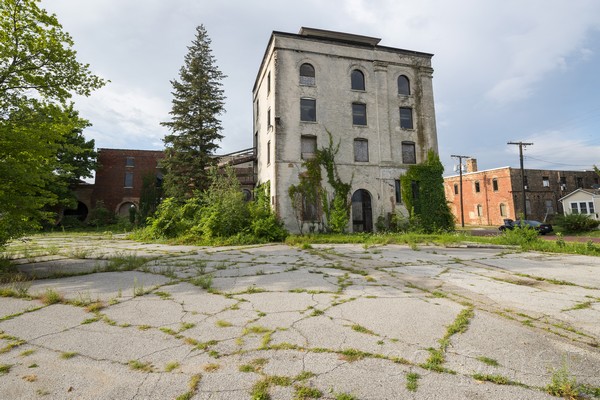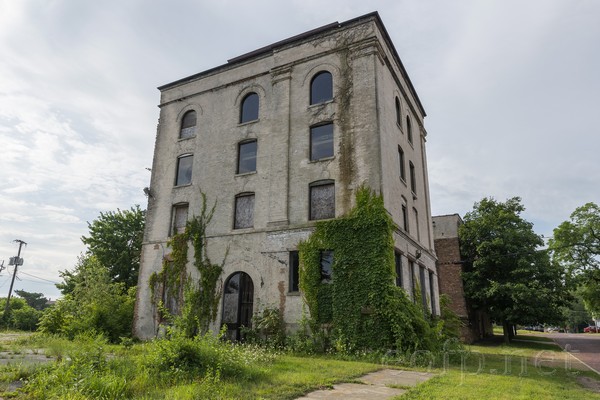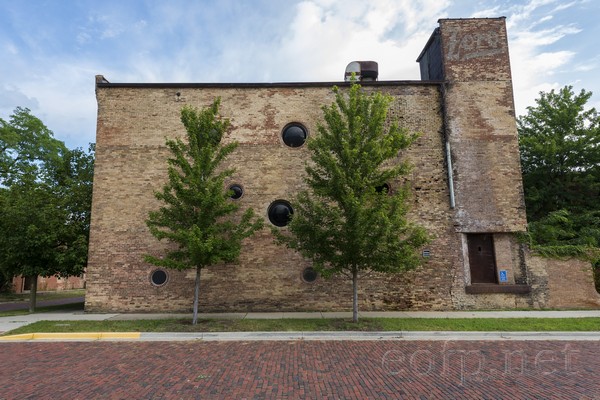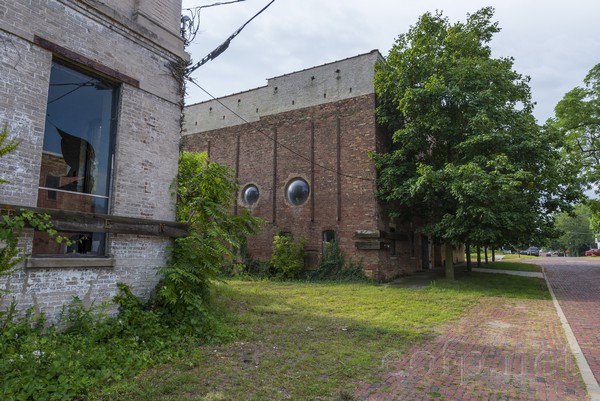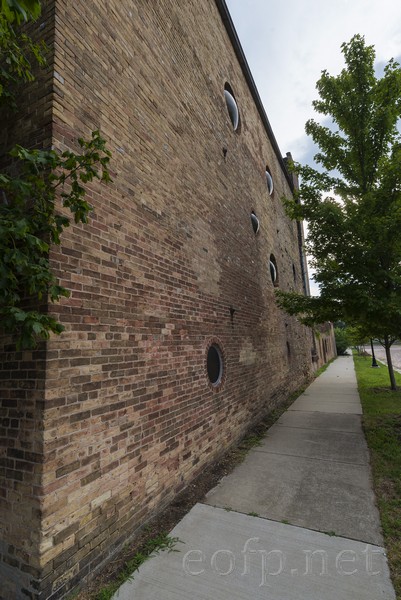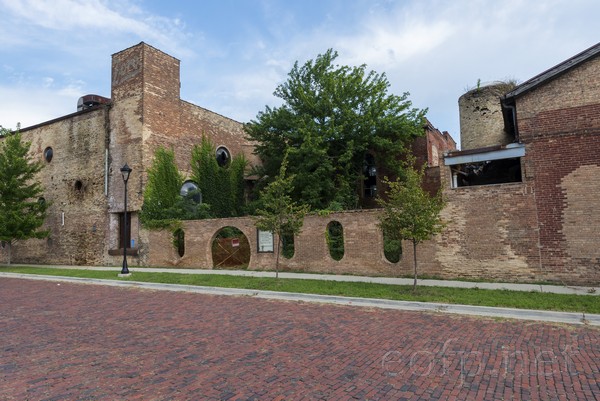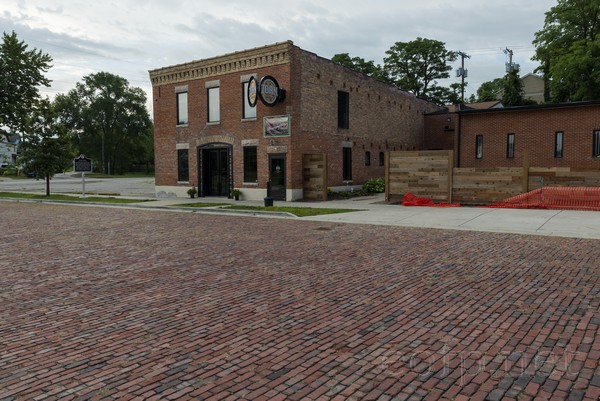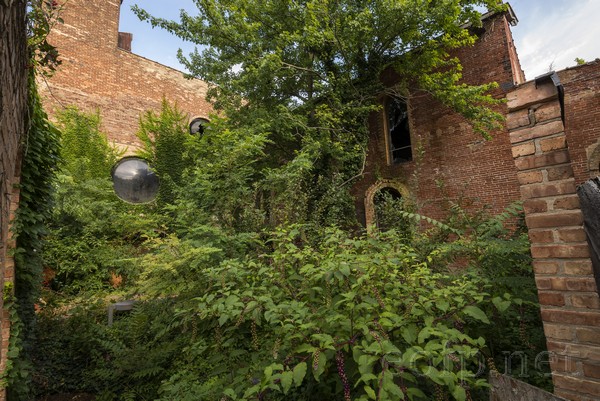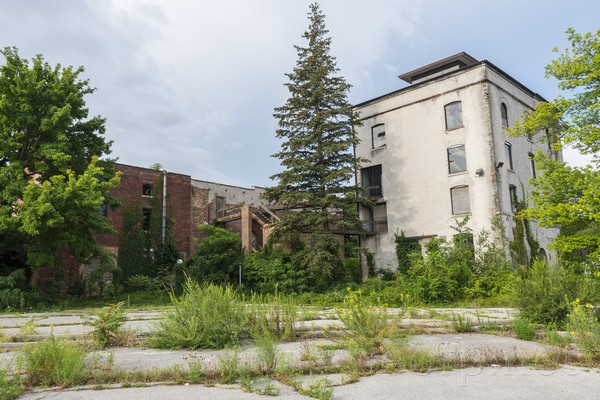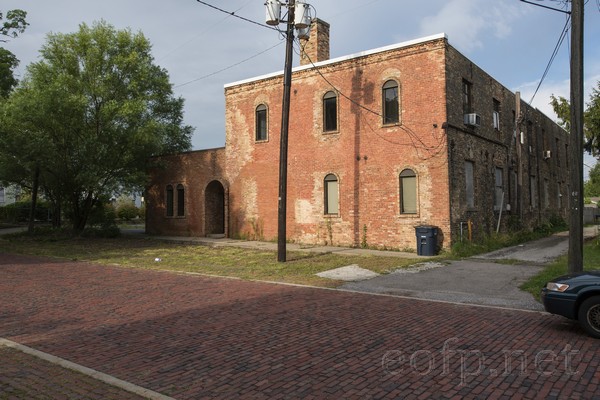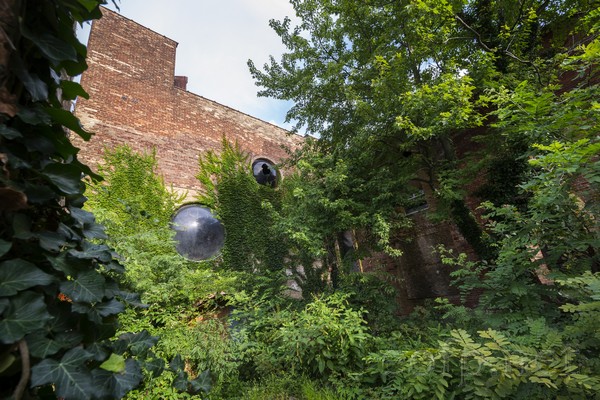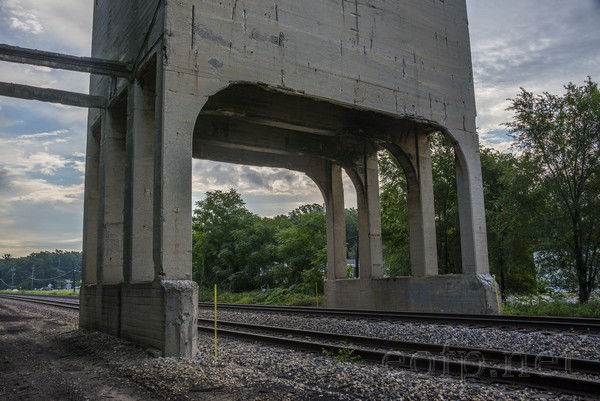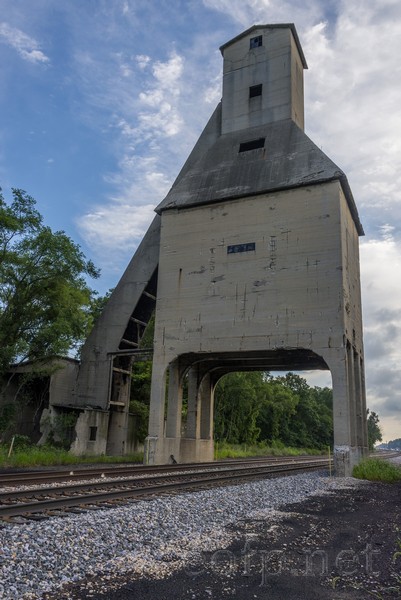11/29/2017
Michigan City, Indiana
Zorn Brewery, Michigan City
I stumbled across two really interesting structures in Michigan City last summer. The one above is the Zorn Brewery; below are some photos of the Michigan City coaling tower. The Zorn Brewery along with the Gebhard Brewery in Illinois and a recently demolished brewery in South Bend Indiana fueled my on-going obsession with pre-prohibition breweries. The Zorn Brewery is particularly interesting because of the ways that it has been altered since it was first abandoned just after the end of prohibition.
Phillip Zorn established his namesake brewery in 1877. It grew until prohibition, in 1919, and at one point was producing 15,000 barrels of beer a year. The brewery was built piecemeal over the years. The 1884 Sanborn atlas shows that brewery's buildings were almost entirely on the south side of 9th. This is where someone has just recently opened a new micro brewery reviving the Zorn name. Part of why I'm so interested in pre-prohibition brewery buildings has to do with the historic geography of beer making in the United States. Beer brewing was a local industry in the 1800s. Beer was bulky, heavy and difficult to ship. Beer spoiled rapidly before bacteria and fungi like yeast were understood. Packaging technology for beer hadn't advanced much beyond wooden barrels until the 1900s. Even though glass bottles had existed for hundreds of years they were difficult and expensive to make and even harder to seal. So beer was mostly brewed for local consumers by small or large brewers depending on the size of the local market. Then as transportation improved and as pasteurization and packaging technology began to make long distance shipping of beer more affordable, prohibition killed the entire industry. Prohibition lasted from 1919 to 1933. It actually started years earlier in many states. Many small brewers didn't survive prohibition. The ones that were just barely able to hang on by producing soda, like Zorn, met a completely changed market and technological/legal environment when alcohol sales began again. The well capitalized large brewers that had been experimenting with bottling and pasteurization prior to prohibition had an immediate advantage. Brewers were no longer allowed to directly serve and sell beer. They had to sell to distributors instead. The brew pubs and beer gardens that had proliferated in the 1800s were outlawed. The depression was in full swing at the end of prohibition and many drinkers probably stuck with the cheap boot legged liquor they had gotten accustomed to until WWII. In any case, many of the small brewers that did survive prohibition were out of business by the 1940s or had been purchased by the large national beer companies like Budweiser, Coors and Miller. The consolidation trend continued into the 1980s. In 1870 the US had over 3,000 brewers. In 1980 the US had less than a hundred brewers left. Of course that trend has completely reversed since then. Now the US had more brewers and breweries than ever before. But those new brewers usually aren't occupying the old brewery buildings that were abandoned during prohibition and the industry consolidation afterwards. Zorn brewery is one of a dozen or so exceptions. The new Zorn brewery is only occupying one small part of the old Zorn brewery. The part of the brewery on the north side of 9th street is still abandoned.
Brewhouse, Zorn Brewery, Michigan City
By 1889, the Zorn brewery had expanded across 9th with a large new ice house. I think this building is still standing at the corner of York and 9th. This indicates that they were probably producing lager beer which required cold temperatures to brew. Brewers in the US in the early 1800s were primarily brewing ales and other British styles. After the civil war German style lagers, which required cold temperatures and longer storage periods came to dominate the market. This was partly due to the number of German emigrants but also due to the changing tastes of American drinkers. Until mechanical refrigeration became affordable and widely available in the 1880s, brewers depended on natural ice and cool caverns and tunnels for brewing. The 1889 Sanborn indicates that Zorn had a small mechanical cooler next to its new icehouse. By 1899, the bulk of Zorn brewery was on the north side of 9th. The old brewhouse, which is no longer standing, was still on the south side of 9th. The buildings on York functioned as a malting building and storage. Zorn had built a bottling building on the opposite, west side, of York, which still exists. The steam power plant which was where the tree filled gap between buildings on 9th is now, was mostly complete by 1899. By 1905 that power plant was finished and the new brewhouse on York had been constructed. The new brewhouse is the tall white building in the photo above. The complex was more or less constructed and as it is today by 1905 with no major changes apparent in the 1912 and 1922 Sanborn atlases. The Zorn brewery isn't a very good example of the Romanesque Revival style that was so popular with brewers in the late 1800s. There are hints of styling and ornamentation here and there in the complex but appearances clearly weren't as important to Zorn as they were to many other brewers. What makes Zorn more interesting is what happened to the building after Zorn went out of business in 1938.
Zorn Brewery, Michigan City
The brewery complex must have sat empty for many years after 1938. Perhaps it was used for storage or maybe it was pressed into war time service by some other industry. I have no idea. But sometime, probably in the 1960s or 1970s, the brewery was taken over by someone with an interest in round bubble windows and maybe post-modernism. These bubble windows were installed at some large expense here and there throughout the complex. A smokestack was neatly sliced down the middle and the two halves separated with a stair case installed between the halves (photo above). A walkway was built some 16 feet above ground level from the former brewhouse to the former malting building. Modernist white bubble streetlights were installed in a few places outside. It was an extensive renovation of several large industrial buildings all with a consistent late modernist theme. Not much apparent damage was done to the building's historic character in the renovation. I think it adds interest. I'd love to know why and by who it was remodeled. And then, at some point more than 20 years ago, by the looks of it, the building was abandoned again. Now, well over 100 years since it was built, the complex is slowly being reoccupied by a new brewer. It didn't seem like a very good location for retail. It's out of the way, about a half mile from downtown Michigan City. But the market for local beer is alive again. This re-localization of the industry is a great mystery to me and seems worthy of study. But it's the on-going reuse and recycling of buildings in the urban environment that makes pre-prohibition breweries most interesting. The breweries built towards the end of the 1800s and early 1900s were highly specialized structures. They were built to house enormous tanks, piping systems, and other equipment specific to the brewing industry. Prohibition made all of those breweries obsolete at once. And yet around 10% or more of those breweries that existed in 1919 are still standing today. Hardly any of them are used for brewing beer. Many are abandoned and many of those will be demolished soon. And that's a shame because many of them are stunningly beautiful buildings. But others have been reused for all manor of purposes. These breweries offer a nice, precisely 100 year marker in the ongoing evolution of urban space.
Zorn Brewery, Michigan City
The Michigan City coaling tower is another obsolete structure I stumbled into last summer. It, unlike the Zorn brewery, isn't likely to find many new uses. The tower was built to fill passing coal burning steam locomotives with fuel. It was built in the mid 1920s out of reinforced concrete. It straddles two, in use, train tracks. I'm sure that at some point, as it becomes more of a hazard to passing trains, that it will be demolished. For now, the expense and difficulty of removing it, is keeping it in place. It's an interesting structure. Its unbalance top heavy bulk is a little menacing.
Michigan City Coaling Tower, Michigan City
Zorn Brewery, Michigan City
Zorn Brewery, Michigan City
Zorn Brewery, Michigan City
The New Zorn Brewery, Michigan City
Zorn Brewery, Michigan City
Power plant, Zorn Brewery, Michigan City
Zorn Brewery, Michigan City
Bottling works, Zorn Brewery, Michigan City
Zorn Brewery, Michigan City
Michigan City Coaling Tower, Michigan City
Michigan City Coaling Tower, Michigan City
All content on these pages Copyright Mark Hedlund 2012-2019. All rights reserved. Use in school projects and with links on social media is always okay. Please send me an email to request permission for any other use: hedlunch@yahoo.com Non-exclusive commercial publication rights for most photos is $25 per image.

